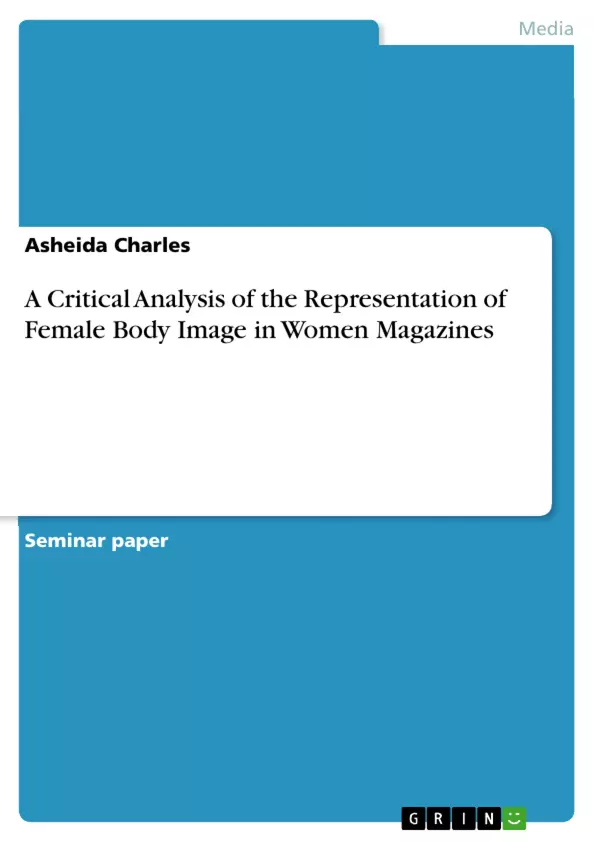The purpose of this paper is to examine and criticize the representation of female body image by mass media. For decades the bodies of women have been tailored to highlight products and services by advertisers and owners of the media as a means of generating capital gains. This tailoring, has led to what many have come to accept as the ‘ideal image of beauty’ that every woman should endeavor to achieve. This paper continues the discussion on a topic that is widely and frequently discussed.
The theoretical framework that this paper employs is based on one of the most applauded theory in communication studies; The Political Economy of Communication and Media theory, which was first coined by Dallas William Smythe. This theory is pertinent to understand the presence of the commercial forces behind creating and maintaining this ideal body image, particularly by advertisers in mass media. The form of mass media that this paper concentrates on is women’s magazine, with specific focus on advertisements regarding beauty and cosmetic products/services. Additionally, case studies in the US and China are used to depict the influence mass media representation of female body image on women.
Table of Contents
- Abstract
- Introduction
- Literature Review
- Methodology
- Discussion/Conclusion
- References
Objectives and Key Themes
This paper aims to critically analyze the representation of female body image in mass media, focusing on women's magazines and advertisements for beauty and cosmetic products. The paper utilizes the Political Economy of Communication theory to understand the commercial forces behind the creation and maintenance of an idealized body image, and it examines the impact of this representation on women.
- The influence of mass media on female body image
- The role of advertisers in shaping and promoting a standardized ideal body image
- The impact of media representation on women's self-esteem and body image
- The commercial forces behind the perpetuation of unrealistic beauty standards
- The audience as a commodity in the media industry
Chapter Summaries
- Abstract: This section outlines the paper's purpose and objectives, highlighting the role of mass media in shaping the ideal body image and the impact of this representation on women. It introduces the Political Economy of Communication theory as the theoretical framework for the analysis.
- Introduction: This chapter delves into the personal experience of the author, demonstrating the influence of mass media on body image. It emphasizes the pervasiveness of the issue and highlights the importance of understanding the relationship between media representation and female body image.
- Literature Review: This section examines the relationship between advertisers and magazine media, demonstrating the power of advertising in shaping women's perceptions of beauty. It introduces the audience as a commodity concept and explores the role of commercial forces in maintaining the ideal body image.
Keywords
This paper focuses on key topics including female body image, mass media, advertising, the political economy of communication, audience commodity, and the impact of media representation on women's self-perception and body image.
- Quote paper
- Master of Arts Asheida Charles (Author), 2014, A Critical Analysis of the Representation of Female Body Image in Women Magazines, Munich, GRIN Verlag, https://www.grin.com/document/313606



